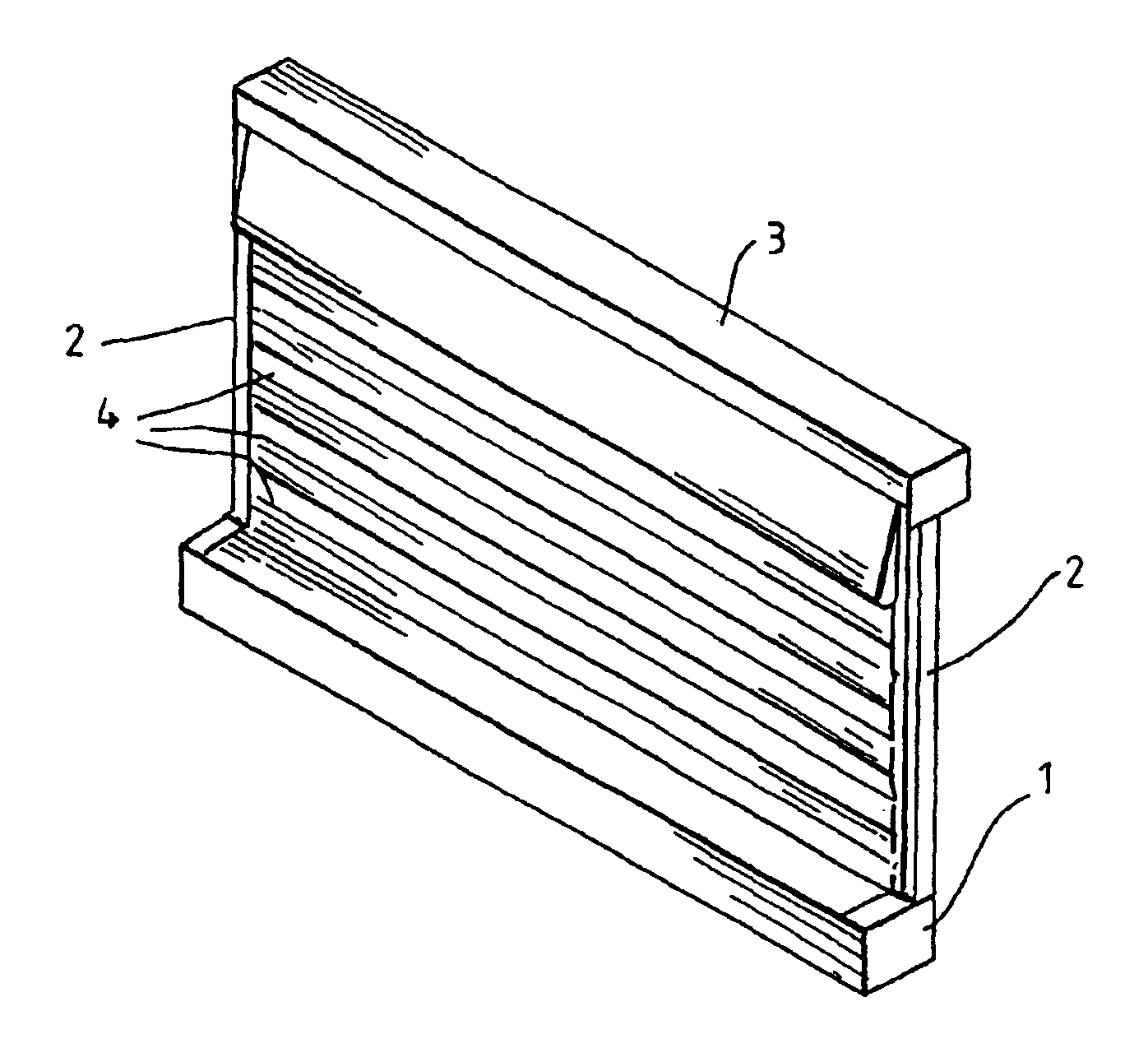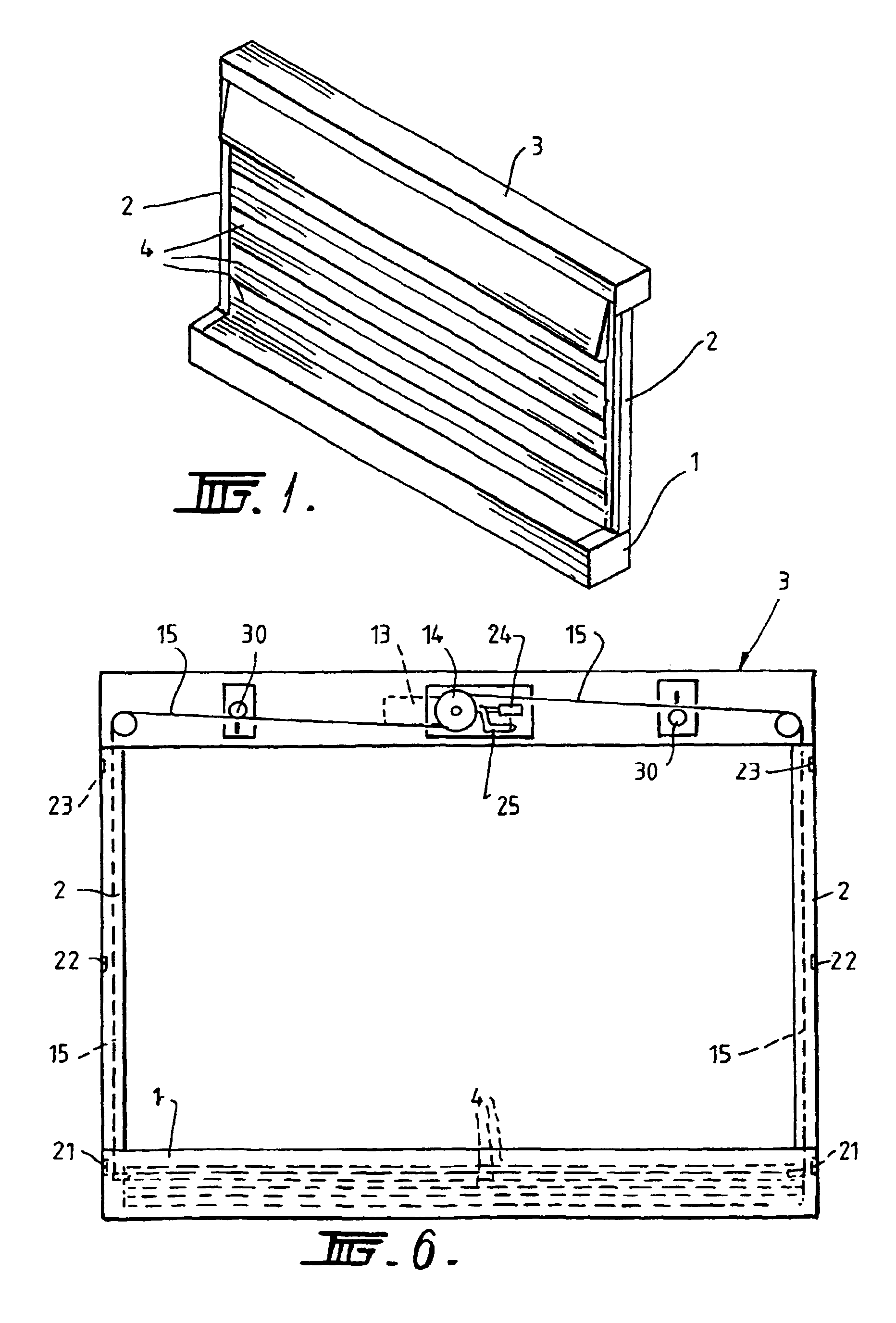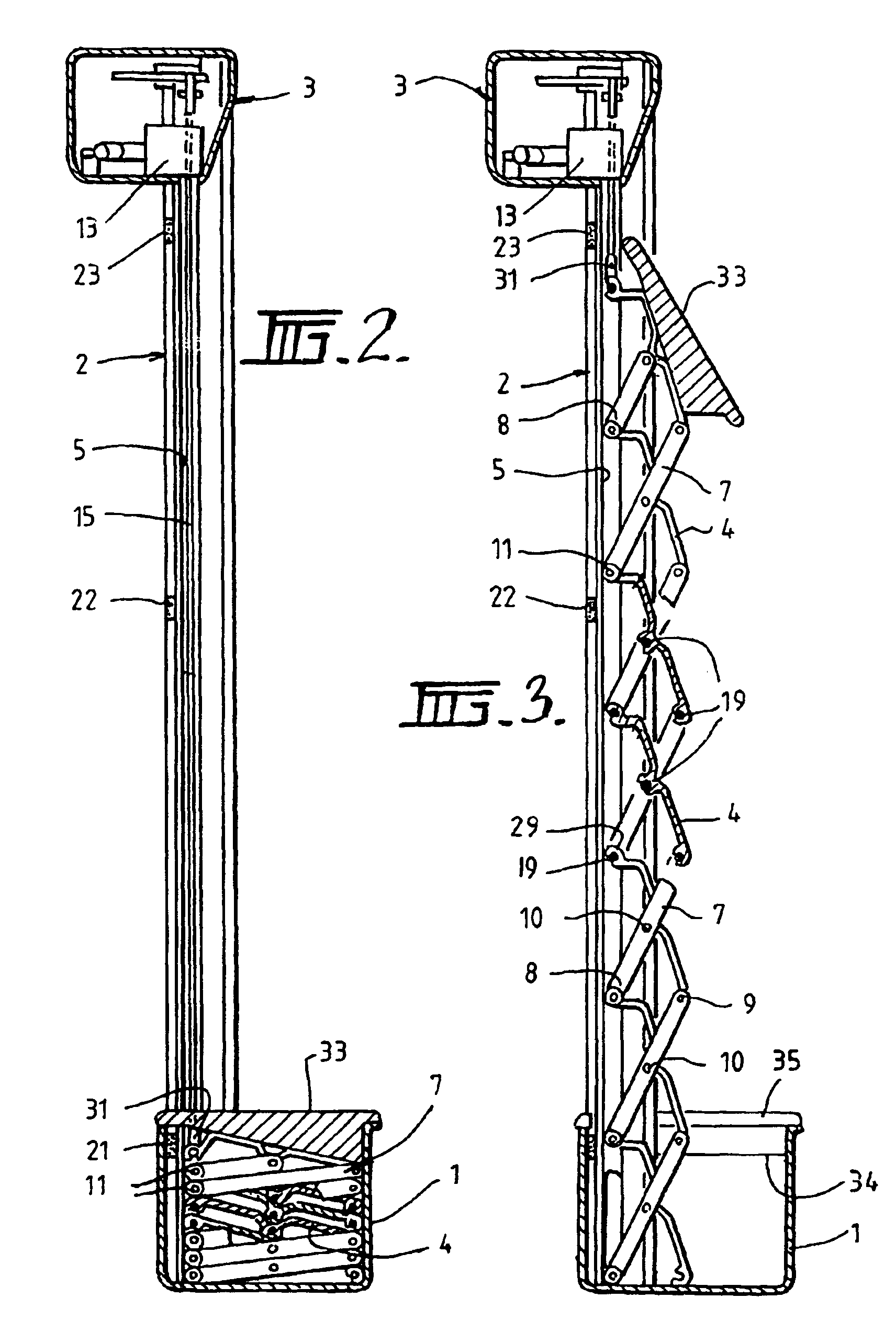Antibandit shutter
a technology of anti-bandit shutters and shutters, which is applied in the direction of shutters/movable grilles, door/window protective devices, wing accessories, etc., can solve the problems of increasing frequency, affecting the safety of personnel working in the public domain, and all the currently available security products suffer from various limitations or disadvantages, so as to prevent the rebound of the slats and minimise the impact of the potentially violent closing of the shutters. , the effect of preventing
- Summary
- Abstract
- Description
- Claims
- Application Information
AI Technical Summary
Benefits of technology
Problems solved by technology
Method used
Image
Examples
Embodiment Construction
[0021]Referring firstly to FIG. 1 the invention provides an anti bandit shutter in the form of a modular unit which is adapted for ready retro-fitting to a variety of counter and other public interface facilities. The shutter is made up in the form of a closed frame having a lower housing 1 in the form of a shallow box with two side mullions 2 rising from either side of the lower housing and finishing in an upper head 3.
[0022]The assembly of the housing upper head and two vertical mullions provide the closed frame which serves to define a finite space on a counter or other public interface situation which can be either open for free access to the public or rapidly and readily closed off so as to protect the operator from any undesirable situations that might arise on the other side of the security shutter. The closed frame of the invention is provided with a plurality of elongate slats 4 which, in one particular embodiment of the invention, are orientated horizontally and are adapte...
PUM
 Login to View More
Login to View More Abstract
Description
Claims
Application Information
 Login to View More
Login to View More - R&D
- Intellectual Property
- Life Sciences
- Materials
- Tech Scout
- Unparalleled Data Quality
- Higher Quality Content
- 60% Fewer Hallucinations
Browse by: Latest US Patents, China's latest patents, Technical Efficacy Thesaurus, Application Domain, Technology Topic, Popular Technical Reports.
© 2025 PatSnap. All rights reserved.Legal|Privacy policy|Modern Slavery Act Transparency Statement|Sitemap|About US| Contact US: help@patsnap.com



